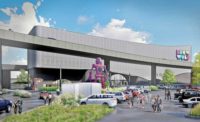"Estimates are bolstered by recent reports that vacancy rates for all classifications of commercial space (office, industrial and manufacturing) have returned to prerecession levels and that rental rates have climbed significantly over the last half of 2013," Hammon says.
He says that three large interstate projects are planned in the Boise area along with the replacement of "a significant bridge" in McCall.
"The state and a number of local highway districts are advancing repair and maintenance projects in other regions of the state originally scheduled for later in the 2014 construction session," Hammon says.
However, in general, highway and public works projects are not expected to see a big increase across the region next year. Wyoming voters passed an increase in the state's gas tax, which should boost heavy-highway construction prospects there, but highway funding remains clouded by the stalemate in Washington and the increased fuel efficiency of many newer-model cars and trucks, which cuts revenues from fuel taxes. And Congress is not likely to raise the gas tax anytime soon, Brewis says.
Highway construction in Colorado should improve in 2014, although long-term rebuilding work for flood-damaged highways in the northeastern part of the state and along the Front Range foothills will take months or years to design and could complicate the funding formulas.
"Although Colorado's economic recovery is sporadic and not geographically consistent, overall we do expect 2014 to be an improvement compared to 2013 for heavy, highway and utility construction," says Tony Milo, executive director at the Colorado Contractors Association. "An increase in CDOT work, thanks to the RAMP [Responsible Acceleration of Maintenance and Partnerships] program, plus federal aid funding due to the 2013 flood, will boost the state's highway construction activity."
Simonson and others say the Mountain States region will also continue to benefit from "the shale gale," the rush to capture shale-oil resources, an improving single-family residential market and the "double-edged sword" of in-migration and population growth.
"People like it here," says Simonson. "The growth is coming to you. More people and businesses want to move here. And you will need to get your infrastructure ready for that."






Post a comment to this article
Report Abusive Comment